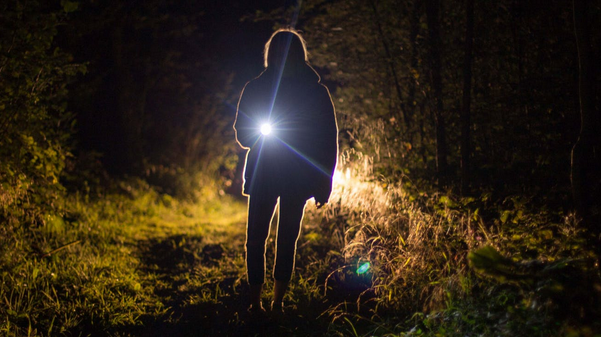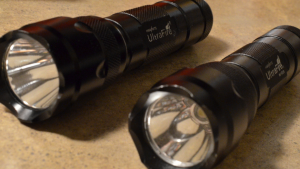What Is A Tactical Flashlight & What Are They Used For?
Remember those Maglites police officers used to carry not so long ago. Those Maglites were pretty much the prototypes of today’s more sophisticated Tactical Flashlights, like the J5 tactical flashlight.
Now, what exactly made those Maglites a “tactical” one is the fact that those could easily be used as impact or stress weapons. Needless to mention, they had other uses as well. In fact, they were so heavy that you could use them to hold up your car! So, that is miles away from today’s pocket-sized tactical flashlights.
The latter are not only smaller, but thanks to the new LED and battery technology of today, they are also brighter, lighter, and tougher than the Maglites. This is why the tactical lights of today are considered as an EDC gear and one that any lay person can use for the purpose of self-defense.

What makes a flashlight a ‘tactical’ one?
So, what separates a tactical flashlight from your normal kitchen flashlight? Well, below are some of the must-have features of a tactical light:
- Since one of the primary and most important uses of these gadgets is self-defense, the light emitted needs to be bright enough so as to temporarily blind the guy you are trying to defend yourself from. Once you flash the light right in his eyes, he will try to shield his eyes from the scorching brightness and that is your opportunity to make your getaway. And by bright enough, we mean ‘really’ bright, as bright as possible—because here the brightness is meant to hurt your potential enemy. And if you didn’t know it already, the difference between an 80 lumens light and a 200 lumens one is incredible. So, the bottom line, never compromise with the brightness factor. Also, once you turn the light off, this leaves after-images in the person’s retina and this further disorients him and makes it all the more hard for him to detect your movements, follow you or engage you in any other manner.
- Also, a quality tactical flashlight must come with bezel edges, especially if you want it expressly as an impact weapon. However, these bezel edges are hard enough to crack a skull, so think twice before you make good use of them! Another thing to keep in mind about these bezel-edged flashlights is that you should get hold of a sturdy leather case when you are carrying one around. The edges are sharp enough to cut through a canvas case and through the linen of your pockets even!
- As an EDC gear, the light needs to be small enough so you can carry it around, either in a belt holster or in one of your pockets (the hip pocket is a good idea), whenever you are on the go.
- All good tactical lights should come with a tail cap switch that lets you switch on and off the torch without any hassle. In a self-defense scenario, time is premium and you certainly don’t need to be fidgeting with your switches while the potential culprit closes in on you. Moreover, high-end tactical flashlights should also be equipped with ‘constant on’ and ‘momentary on’ options.
- The gadget should be shock proof and water proof and you should be able to operate it with one hand only.
- Also unless you are using the flash as a dedicated weapon or self-defense gadget, it is a good thing if the tactical flashlight offers multiple brightness settings. This would help you save the battery life of the device.

Some additional features to look for
Although the below-mentioned features are not mandatory, it will be still nice if your flashlight device comes complete with these features as well.
- The strobe mode. This is not too useful a feature of a tactical flashlight, although it may still come handy in certain situations. Examples:
- If you are running away from someone and if you can use the strobe mode then, it will further disorient the attacker and will help conceal your movement from him.
- In a survival scenario, the strobe is a nice tool to signal someone.
- When you have a flashlight with multiple brightness settings or a strobe mode, try to find a device that lets you access these different control settings via a single on/off switch. For example, press the switch once for low brightness; twice for high; and a third time if you want to get the strobe mode on. This is much more convenient than having to access different, dedicated switches for different features.
- A lanyard comes handy in critical scenarios when dropping your light can have serious consequences.
- A secure clip that lets you attach the light to your belt, vest or pocket.
- Reasonable warranty and good customer service.
- And finally, the batteries. Of course, you should look for a light that can accept rechargeable batteries. However, if this is not the case, our suggestion is that you go for good old style Double AA batteries that you can find practically anywhere. Why we mention this is that many of these flashlight products come with some odd battery configurations. Some of these odd style batteries may have a longer life. However, the problem is that you’ll normally have a hard time finding a replacement. For instance, think of a lithium battery with the configuration 123A 3-volt or something in that line! However, if you do own a tactical flashlight with one of these special batteries, we would recommend that you buy a few of those batteries at once and store them for emergencies.
Features to avoid
Now that we have talked about the desirable features of a tactical flashlight, let’s put in a few words about some features that should be a strict no-no for these lights.
First of all, stay clear of any light that is composed of a number of small LEDs. So, we are talking about weaker and smaller LEDs of 9, 12 or 20 lumens. For one thing, these lights can never be powerful enough and also, all those little LEDs mean that the head of the light is far too large to tuck the device into a pocket.
That said, if a light comes in a bundle of two to four LED lights with a total brightness of 1,000 lumens or more, you should be okay to go with it. Also, if the device features some secondary LED bulbs (normally of different colors), this is acceptable, too, since this does not interfere with the brightness of the main light.



